The cat in hat, Slash is recognised worldwide. A devotee of the Les Paul and Marshall set up, his combination of bombastic riffs and fiery licks has seen him recognised as one of the most popular players of the last 20 years. With that in mind, it’s not a surprise that his name has been featured across a wide surplus of gear that spreads over a wide range of prices.
Guitars:
In terms of axes, there’s no shortage of slash signature models on the market. If cash is no shortage and budgeting’s not an option, a Gibson Custom Slash Signature model can set you back anywhere from £3000 upwards. As there have been many different incarnations of the custom shop Lesters they’re available in a wide range of finishes such as tobacco burst or butterscotch, and shouldn’t be too difficult to hunt down. Degenerating slightly in price, Gibson USA has also produced a multitude of different Slash signatures. Although they’re not quite the luxurious fine-crafted items of Gibson’s Custom shop, the Gibson USA models are still excellent instruments that offer great quality. The Lesters will set you back anywhere between £1800-£28000 depending on the model, but all can achieve Slash’s gargantuan tone with ease. Some hunting online will reveal some of the older models, but the Rosso Corsa and Vermillion Red models could likely still be found at a handful of retailers. For those trying to achieve Slash’s guitar tone on a slightly looser budget, an Epiphone signature model is the way to go. They offer identical specifications to the Gibson USA models, as well as the Seymour Duncan alnico II pros found on all of the USA models for a fraction of the price. Again, a short hunt online and £600 later, and you could be a step closer to achieving that tone. For those that already own a good Les Paul and just want to get a touch closer to Mr.Hudson’s tone, adding Seymour Duncan Alnico II Pro Slash humbuckers is a superb way of doing so. The pickups are based off of the alnico II pro pickups found in Slash’s main studio guitar, otherwise known as the Derrig Les Paul, but have both a hotter wind and older school appointments such as a wooden spacer. A final point of notice is that all of the guitars mentioned built before 2011-2012 feature just regular Seymour Duncan alnico II Pro’s, whereas any of the instruments constructed after this period boast the signature editions.
Amps:
In terms of amplifiers, it’s unquestionable that Marshall is the premier choice when trying to achieve Slash’s tone. For those on a higher budget there are three main options. The first of these is the Marshall Silver Jubilee head that was used by Slash on the Use Your Illusions albums as well as the following tour. Unfortunately, locating one of the silver boxes of joy can be a rather troublesome affair, as given that the majority of their owners don’t want to depart with them, it’s understandable that their price range expands from £2000 upwards. The closest option to the Silver Jubilee is the JCMSLASH. The first signature model Marshall ever, the JCMSLASH is a limited edition amplifier that is based on a Silver Jubilee, though with a touch more gain on offer. It’s pretty much been featured on all of Slash’s post Illusions albums, and so if you’re looking for the grind and grunt of Snakepit or the raunchiness of Velvet Revolver, this is arguably the amp to go with. In terms of achieving Slash’s most legendary tone, the highly coveted sound of Appetite for destruction, there are two ways to go. Seemingly the most popular way of doing this is modifying a pre-existing amplifier such as a JCM800 or JMP. The obvious benefit of this option is that it’s a relatively cheap way of altering your current amp to get it closer to the legendary tone of appetite. The tweakers over at Voodoo Amps offer ‘AFD’ modifications that range from some small adjustments to full on amp makeovers.
The second way to go, when searching for an amplifier that offers the legendary tone that is appetite, is Marshall’s AFD100. The AFD100 is two channel Rock n’ Roll monster, specifically designed by Marshall and Slash to achieve the AFD tone. In terms of an all in one amplifier that achieves Slash’s tone, this is the probably the best option as it provides channels dedicated to both it’s namesake and Slash’s post appetite tones. Again, this amp shouldn’t prove too difficult to find with some searching online. They’re also a great deal cheaper than a Jubilee or JCMSLASH, given that they were produced much more recently, and cost anywhere between £800 – £1500. Guitar Tone Talk has also review the AFD, which can be found here. In terms of cabinets, when attempting to replicate this particular sound, Celestion Vintage 30s are with out a doubt the way to go. Any cabinet equipped with these should suffice, though a 4×12 like the Marshall 190AV is ideally a better option as it offers more depth and bottom end. For those with less to spend, Marshall’s discontinued Vintage Modern range is worth a punt. It’s the amp used by Slash towards the end of Velvet Revolver and can fetch anywhere upwards of £450 online. Marshall also offers a full production run 5watt version of the AFD, known as the AF5. The smaller brother to the AFD100 has similar characteristics to its counterpart, but in addition boasts a clean channel as well as Vintage 30 speaker. At £586 the AFD5 is an excellent way of achieving the sound of appetite at both bedroom and wife friendly levels.
 Effects:
Effects:
It’s unquestionable that a good wah is necessary for achieving Slash’s tone, especially when considering how prevalently one has been used by the rocker throughout the years. Dunlop offers a Slash signature model (yes another signature product!), which is likely the best option to go with in this scenario given that Slash uses it himself. Interestingly enough, there’s two incarnations of the SL-wah. The first of these is SW95 which offered a hot-rod red finish, as well as a built in distortion circuit. The second Crybaby to bare the axeslinger’s name is the SC95, which offers a lower response frequency and a more classic voicing. Considering that the SC95 is the wah currently being used by the guitar hero, it’s likely the best option to go with, although both will leave the wallet £159 lighter. For those on a budget, Dunlop’s standard Crybaby is the friendliest option. It offers a classic voicing, but at £69 it hardly breaks the bank. For those really gunning for Slash’s sound, it’s worth taking a look the MXR Slash octave fuzz. It’s not exactly essential for getting a grip on this tone, but it does provide an additional outlet to Slashville. The stompbox is essentially a Way Huge Swollen Pickle with the addition of both an octave up and an octave down. It’s the pedal featured on a number of the tracks from Apocalyptic Love, and is really the best option for getting that grinding octave sound that is used by Slash on occasion. For around £150 the MXR Slash Octave Fuzz is hardly a steal, but it does provide an extra touch of authenticity and gusto in the quest for Slash’s tone.
Though a little bit more complex than just a good Marshall and Les Paul, Slash’s tone is certainly not one of the hardest sounds around to achieve. Combine this with the vast range of signature gear parading about the market and it’s a winning formula for a highly achievable guitar sound, regardless of budget or preference. Unfortunately, finding a suitable top hat could prove a lot more difficult…
 This is a guest post by guitarist Stephen Rose
This is a guest post by guitarist Stephen Rose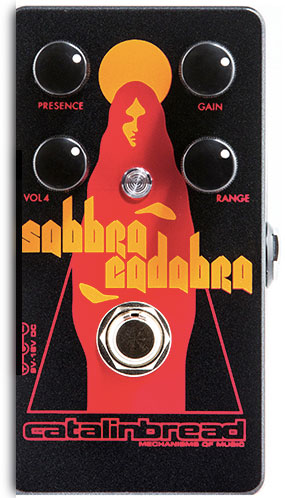
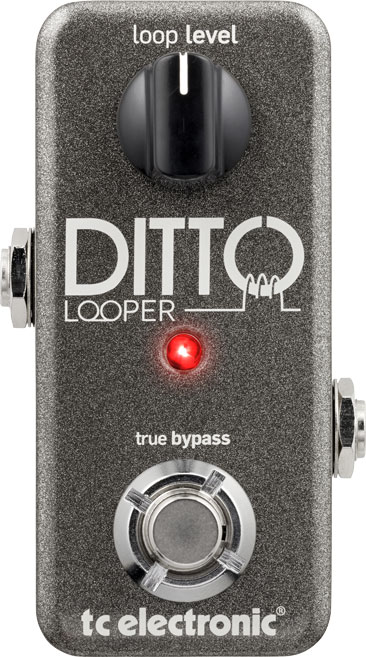
 This is a guest post by Tom Kay
This is a guest post by Tom Kay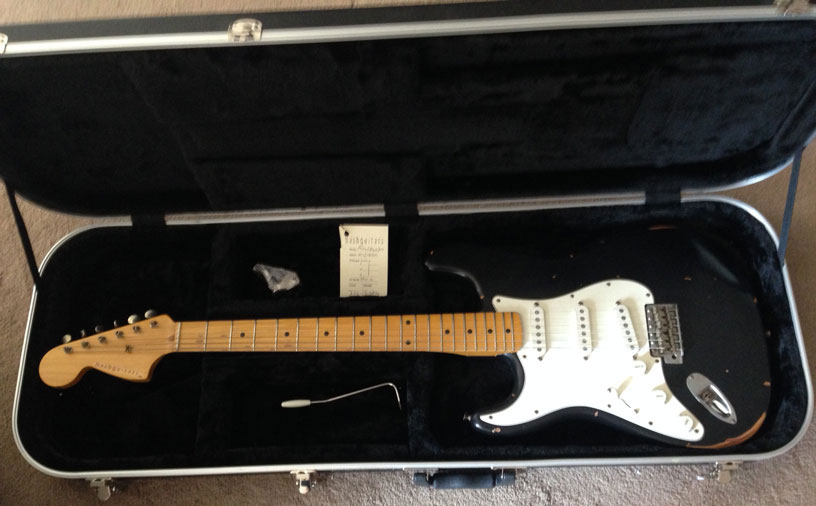


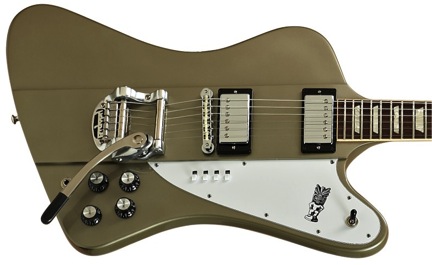
 The Gibson Firebird is an iconic guitar from a legendary manufacturer. First introduced in the 1960s, the Firebird’s shape and sleek lines were created by an automotive designer who Gibson hired to add to the already unique shapes like, the Flying V and the Explorer. Players such as Warren Haynes and Stephen Stills have been known to use a Firebird, but no one is more associated with the Firebird than Johnny Winter. Given the guitar’s rich history, I was excited for the opportunity to review the Gibson Elliot Easton “Tikibird” Firebird. I was also looking forward to playing a Firebird because it is one of the few guitars that I have not played before.
The Gibson Firebird is an iconic guitar from a legendary manufacturer. First introduced in the 1960s, the Firebird’s shape and sleek lines were created by an automotive designer who Gibson hired to add to the already unique shapes like, the Flying V and the Explorer. Players such as Warren Haynes and Stephen Stills have been known to use a Firebird, but no one is more associated with the Firebird than Johnny Winter. Given the guitar’s rich history, I was excited for the opportunity to review the Gibson Elliot Easton “Tikibird” Firebird. I was also looking forward to playing a Firebird because it is one of the few guitars that I have not played before. One of the main highlights of this guitar are the four tonal switches. The first switch splits the coil of the neck pickup when in the neck position; the second splits the coil for the bridge pickup when in that position; the third switch engages the pickups to be reverse wound and in reverse polarity of each other when in the middle position; and the fourth, when engaged, routes the bridge pickup straight to the output jack. This is helpful when you need to switch to the bridge pickup and not worry about getting to the selector switch.
One of the main highlights of this guitar are the four tonal switches. The first switch splits the coil of the neck pickup when in the neck position; the second splits the coil for the bridge pickup when in that position; the third switch engages the pickups to be reverse wound and in reverse polarity of each other when in the middle position; and the fourth, when engaged, routes the bridge pickup straight to the output jack. This is helpful when you need to switch to the bridge pickup and not worry about getting to the selector switch.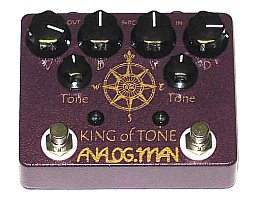
 This is a guest post by Sean Murray
This is a guest post by Sean Murray
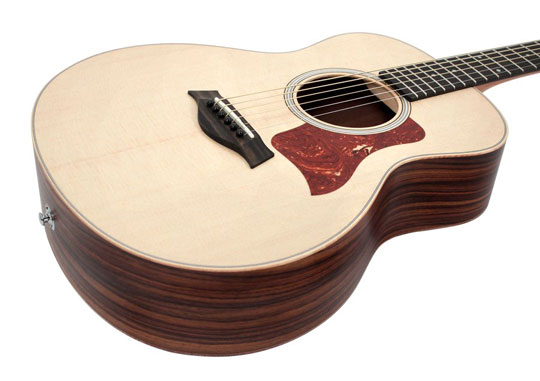
 This is a guest post by Freddy Charles
This is a guest post by Freddy Charles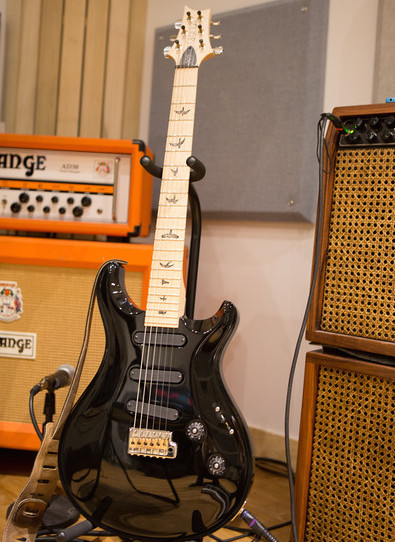
 This is a guest post by Freddy Charles
This is a guest post by Freddy Charles Effects:
Effects: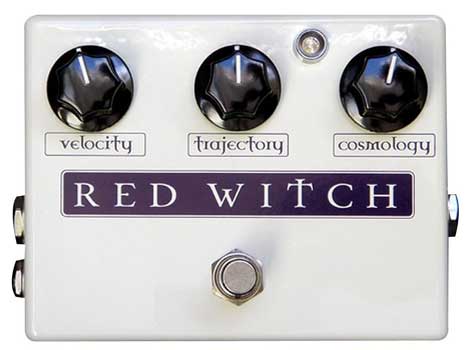
 Moog MF103 Moogerfooger 12 Stage Phaser
Moog MF103 Moogerfooger 12 Stage Phaser The Duluxe Moon Phaser by Red Witch is an excellent choice, especially since it is also all-analog. It gives a nice and warm sound that is very lush. The coolest part about the Moon Phaser is that you can also use it as a tremolo pedal.. so it is another great 2-in-1! It even has a setting called tremophase which combines the tremolo and phaser together to get some wildly mind-bending tones. The controls on the Moon Phaser are velocity, trajectory, and cosmology which is a selector between types of phase and tremolo. You can even use this pedal in stereo with it’s additional output. Definitely a great phaser pedal that does more than a typical phase. View the Red Witch Deluxe Moon Phaser on
The Duluxe Moon Phaser by Red Witch is an excellent choice, especially since it is also all-analog. It gives a nice and warm sound that is very lush. The coolest part about the Moon Phaser is that you can also use it as a tremolo pedal.. so it is another great 2-in-1! It even has a setting called tremophase which combines the tremolo and phaser together to get some wildly mind-bending tones. The controls on the Moon Phaser are velocity, trajectory, and cosmology which is a selector between types of phase and tremolo. You can even use this pedal in stereo with it’s additional output. Definitely a great phaser pedal that does more than a typical phase. View the Red Witch Deluxe Moon Phaser on  The Diamond Phase pedal is a very transparent phase, but can also do a heavy ’70s phase as well with it’s stage selector. With a Regen control, you can get some cool feedback sounds in the phase. One of the coolest parts of the Diamond Phase is that there is an input for an expression pedal, so you can control the speed with your foot. This really makes the pedal versatile as you can get some crazy sounds on the fly without having to change the settings with your fingers. Other controls on the Diamond Phase are volume, which allows you to make it match your bypass volume or even give it a boost if you like, and a control for depth which allows you to dial the intensity of the phase. There is also a switch to select a ‘vibe’ mode which changes it to more of a vibrato pedal. Very cool!
The Diamond Phase pedal is a very transparent phase, but can also do a heavy ’70s phase as well with it’s stage selector. With a Regen control, you can get some cool feedback sounds in the phase. One of the coolest parts of the Diamond Phase is that there is an input for an expression pedal, so you can control the speed with your foot. This really makes the pedal versatile as you can get some crazy sounds on the fly without having to change the settings with your fingers. Other controls on the Diamond Phase are volume, which allows you to make it match your bypass volume or even give it a boost if you like, and a control for depth which allows you to dial the intensity of the phase. There is also a switch to select a ‘vibe’ mode which changes it to more of a vibrato pedal. Very cool!